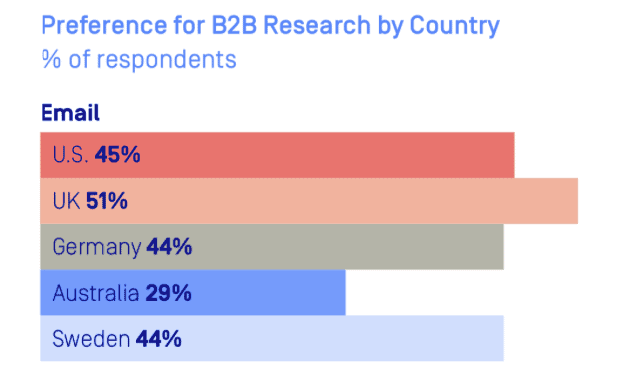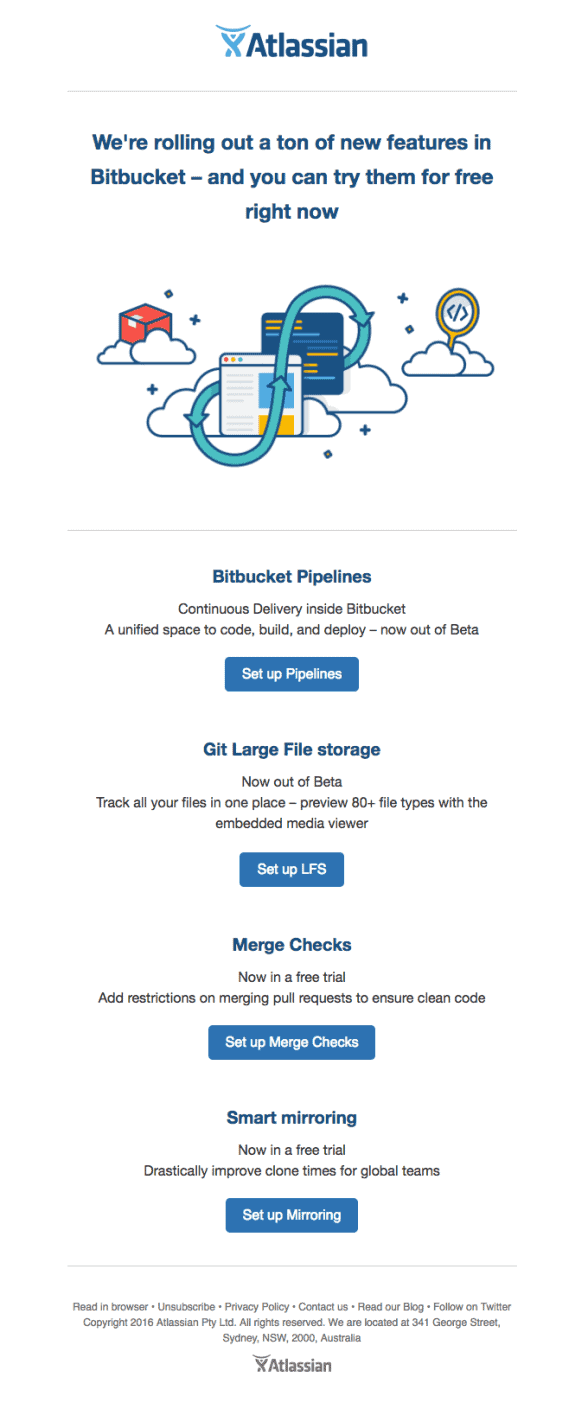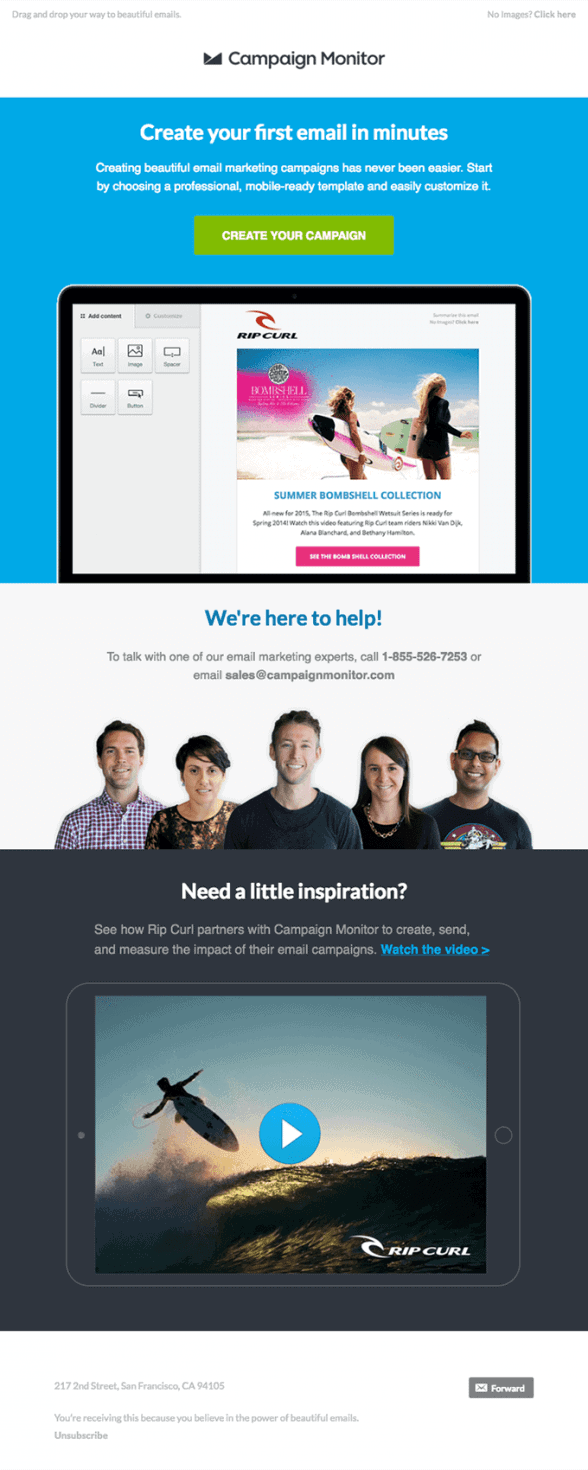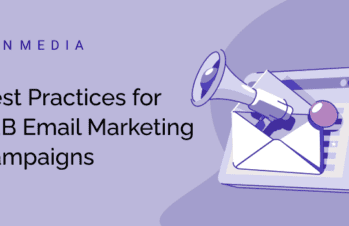B2B Email Marketing: The New Rules
Email marketing has been a critical element of B2B marketing since the world went digital.
Most B2B companies have historically embraced this, sending out regular e-newsletters and updates to keep their clients and potential clients engaged and abreast of new developments.
The challenge, however—or one of the challenges—has been that B2B companies don’t have quite as many obvious reasons to send out emails as their B2C counterparts. Many B2B brands don’t have coupons or flash sales to advertise, after all.
But that doesn’t mean that B2B brands don’t have plenty of reasons to stay in touch with their clients via email. In fact, today it’s more important than ever to do so.
While lots of email marketing tactics have stayed the same, certain things have changed. Here are the new rules of B2B email marketing and why you should be playing by them.
B2B buyers want to hear from you by email.
It’s easy to think that most of the emails you send to clients and potential clients will end up in their Trash, but actually, B2B buyers want more email from you.
According to research by Episerver, 54 percent of b2b decision-makers want B2Bs to communicate with them more frequently via email. In addition, 45 percent of U.S. B2B decision-makers prefer to learn about a company via email more than any other channel.

Source: Episerver B2B Digital Experiences Report 2019
And yet despite these numbers, 59 percent of b2b brands don’t use email marketing at all. Among the brands that do, the average number of email communications sent is only one every 25 days.
It’s important to note, as well, that phone calls were the least desired form of communication, meaning that it’s probably time to shift some of your sales department’s cold-calling to cold-emailing.
Another thing to consider is that the B2B landscape is becoming more and more millennial-centered, as members of this generation are starting to hit their stride as decision-makers. And according to research from Adesta, 73 percent of millennials prefer communications from businesses to come via email.
What this should tell you is that if you’ve been neglecting your B2B email marketing, it’s time to get back on that horse.
Here are some guidelines for how to approach your B2B email marketing in 2020.
Use email not only for the top of your funnel, but to move leads down to mid-funnel, as well.
Email has generally been used as a top-of-the-funnel approach.
B2B brands often focus on the channel as a way to increase awareness and engagement among their audiences.
Newsletters, downloadable content, and promotions are all good examples of this kind of content. The idea for each is that a lead or perhaps a client who hasn’t converted in a while will see your brand’s name in their email, remember who you are, and hopefully click on the email to see how your employees have been helping their community, or what new product you’re offering, or what the webinar you’re promoting is about.
If you move them down the funnel, that’s excellent—but most brands aren’t targeting their emails closely enough to make this a probability.
If you have a promotional email, for example, that offers a free consultation on a new service you’re offering, you might send it to your entire list with the primary goal of getting more eyes on your brand. That’s fine—but let’s look at how you could increase the effectiveness of this email by using it to actually move clients down your sales funnel, so they ultimately convert.
One way would be to create segmented email lists and adapt the email to each.
For existing customers, you could include a “thank you for your business” message and give them a special deal you’re not offering others. That could be a larger discount, longer period of time to take advantage of the sale, or a sneak peek of your new product or service, among others.

Source: MailBakery
In this email, Atlassian is giving existing customers the chance to try their brand new features not only before anyone else, but for free.
Personalize, personalize, personalize
Gone are the days when using a customer’s first name in the greeting of your email counted as personalization.
Today’s B2B buyers, after all, are connected consumers during their off-hours. They’re shopping B2B websites that have curated selections just for them, viewing emails reminding them they looked at an item two weeks ago but didn’t purchase, and scrolling through social feeds with ads that are designed precisely to appeal to their interests, values, and desires.
So it stands to reason that they’re going to expect something similar from the B2B brands they interact with at work.
If you’re not convinced, consider this statistic from Campaign Monitor: Marketers who use segmented campaigns note as much as a 760% increase in revenue.
Because email lists can be segmented now based on lots of different criteria, email is actually an ideal channel through which to deliver personalized content.
Say you segment your lists by customers who signed up for a service, but haven’t yet used it. You could create an email reminding them to get started, and offering some inspiration. That’s what CampaignMonitor did with this email:

Source: MailBakery
Other ways to personalize your email campaigns are:
- Deliver content based on customer interests—by product/service or by format
- Create special offers for different groups of customers
- Develop brand intro emails for new email sign-ups
- Share events and news based on your customer’s geographic region
Don’t be stuffy
Yes, your customers and leads want you to be professional. But formal, jargon-filled language is even more out of style than it was five years ago (and believe us, jargon has never been the way to any customer’s heart).
As B2B continues to take more and more of its cues from B2C marketing, the language B2B marketers are using is becoming more casual and friendly than it’s ever been.
Of course, you still have to know your audience. If you’re marketing your products to C-level executives of Fortune 500 companies, then you’ll need to adopt a more professional and confident tone than you would marketing to 20-something new small business owners.
However, we are now seeing statistics that show a less formal tone is attractive to B2B buyers. For instance, 56% of brands using an emoji in their email subject line had a higher open rate than those that did not, according to Forbes.
Doing something small, like adding an emoji to your subject line, is an easy thing to experiment with that can give you some insight into what your customers like.
You could also write the same email in slightly different voices—one your typical brand voice, the other in a slightly less formal voice than you usually use. Then do an A/B test with them and see which email earns the most opens and clicks.
Related Post: How B2B Companies Can Exceed Digital Expectations
Send emails often—but not too often
If you’re among the B2B brands that are sending just one email communication every 25 days, it’s time to increase that frequency.
The most effective schedule, according to CoSchedule, is to communicate between 2 and 4 times per month with your email list. 37 percent of B2B marketers said 2-3 times per month was ideal, with 25 percent saying 3-4 times per month worked best.
You certainly don’t want to bombard your clients, but remember that the majority of B2B buyers, according to the majority of research, say they want more email, not less. So unless you’re sending out multiple emails per week, you can probably stand to increase that number.
Remember your email marketing should aim at creating a dialogue, rather than just supporting a monologue
Promotional emails and content delivery are valuable elements of any email marketing strategy—but make sure that you’re incorporating opportunities for your clients and customers to engage with your brand in a meaningful way, too.
“Meaningful way” means more than just buying something or downloading a report. Here are a few options for building a robust two-way relationship with clients through email:
- Send out occasional surveys
- Create contests and giveaways
- Ask your clients to get in touch for a “client spotlight” feature
- Ask for feedback on recent webinars, reports, or other content
- Embed social mentions from customers (after first getting their permission, of course!)
Remember that emails work best when they’re part of a larger campaign, not just a series of one-offs
Emails that are part of a larger PR campaign have the advantage of sparking customers’ curiosity and, hopefully, leading them further down the funnel.
Take Welcome or Intro campaigns, for example. These are emails sent to customers right after they sign up for your email—ideally, immediately after, as they can be triggered to send as soon as a customer enters their email on your site.
While many brands keep their Welcome campaign to a single email, you can also expand that into two or three. The first can be a simple and general welcome and overview of your brand. Next, you could take them for a spin through your content library, or give them a view of your product/service families. If you have a b2b ecommerce store, walk them through the ordering process.
Just be sure to keep each email under about 400 words if possible. Save the heavy verbiage for your website—if they click your email link, you’ll know they’re probably interested in reading or hearing a bit more.
B2B email marketing and B2B content marketing is critical for brands today, as the other most traditional form of communication—phone—is steeply declining in value for the majority of buyers.
After all, b2b business is all about nurturing relationships with your customers, no matter where those customers are in your funnel. Ready to get started? Contact Zen Media today!




